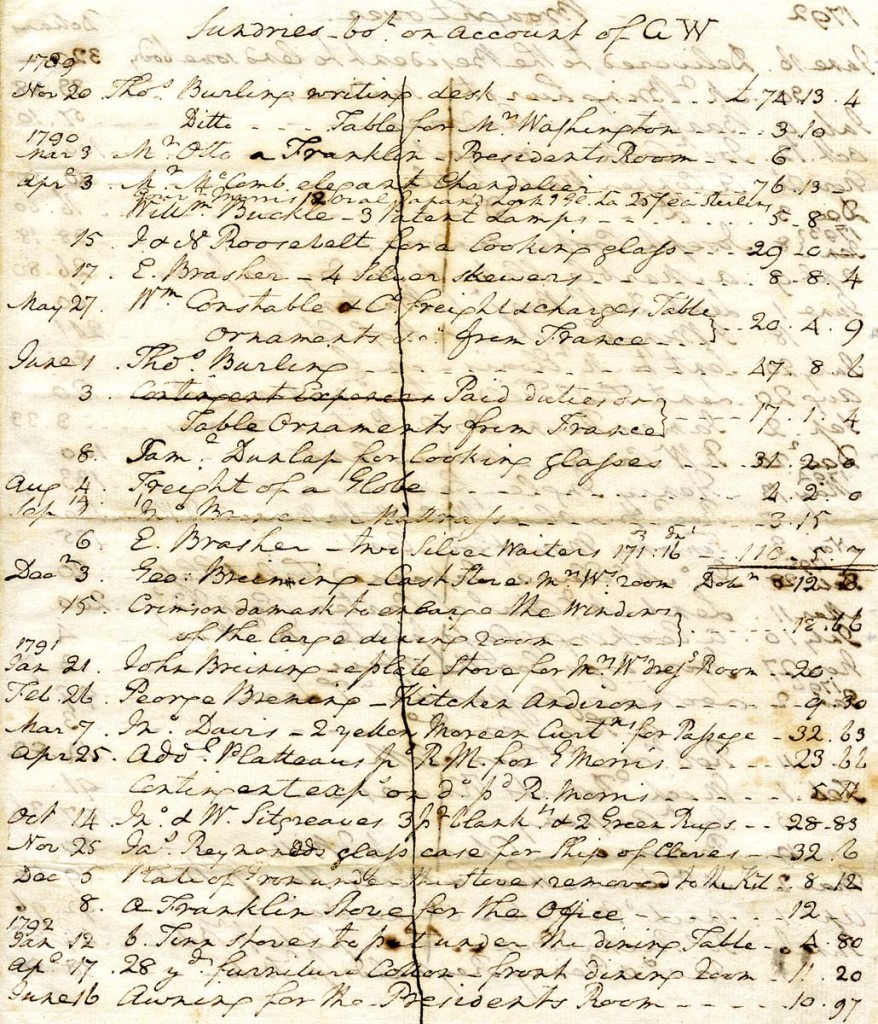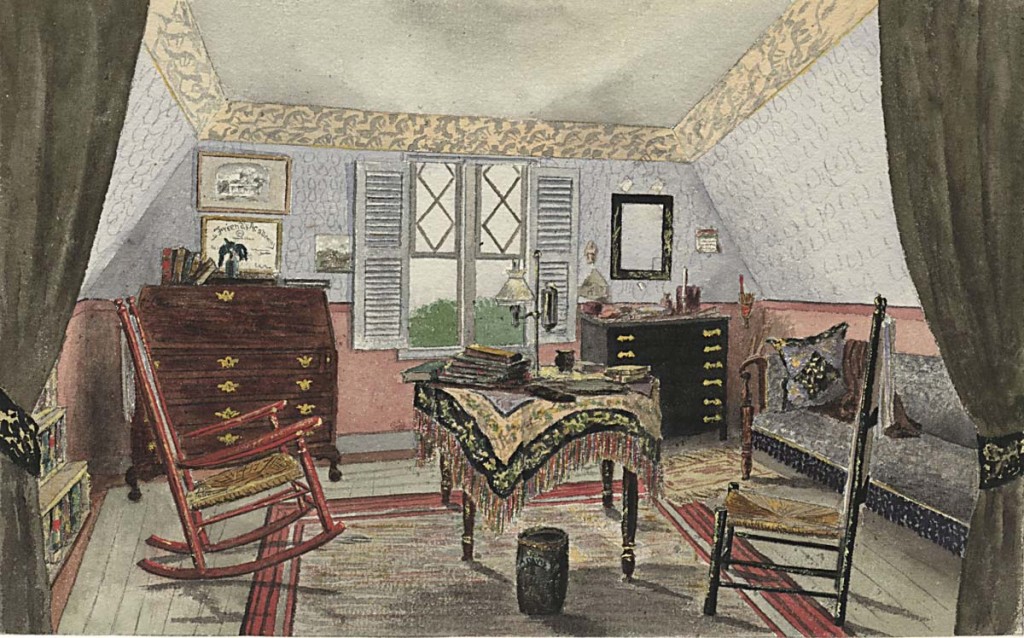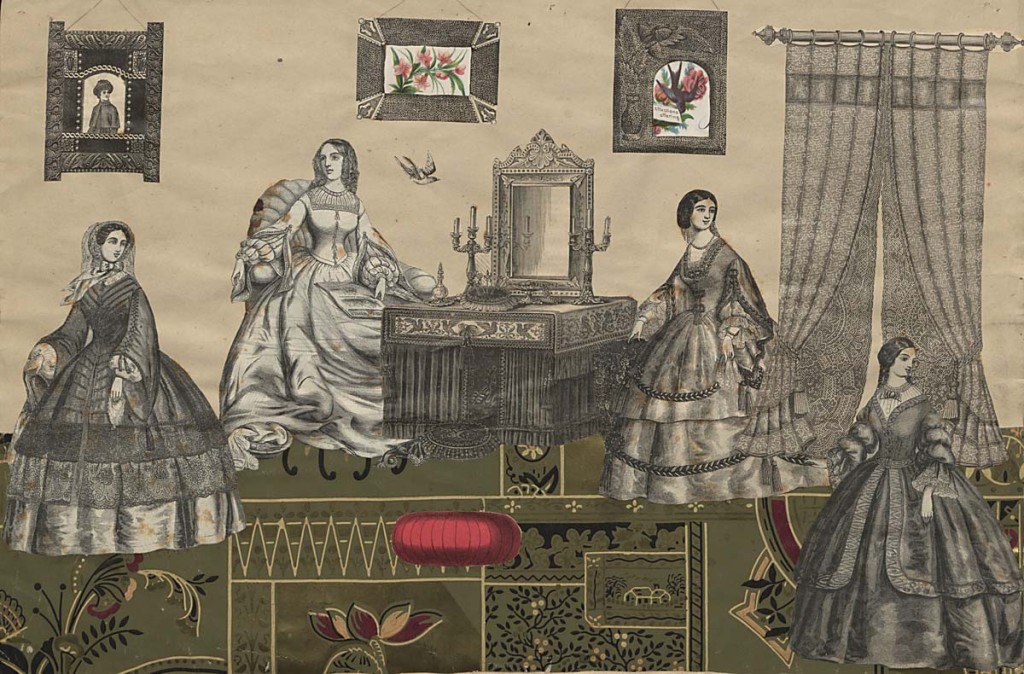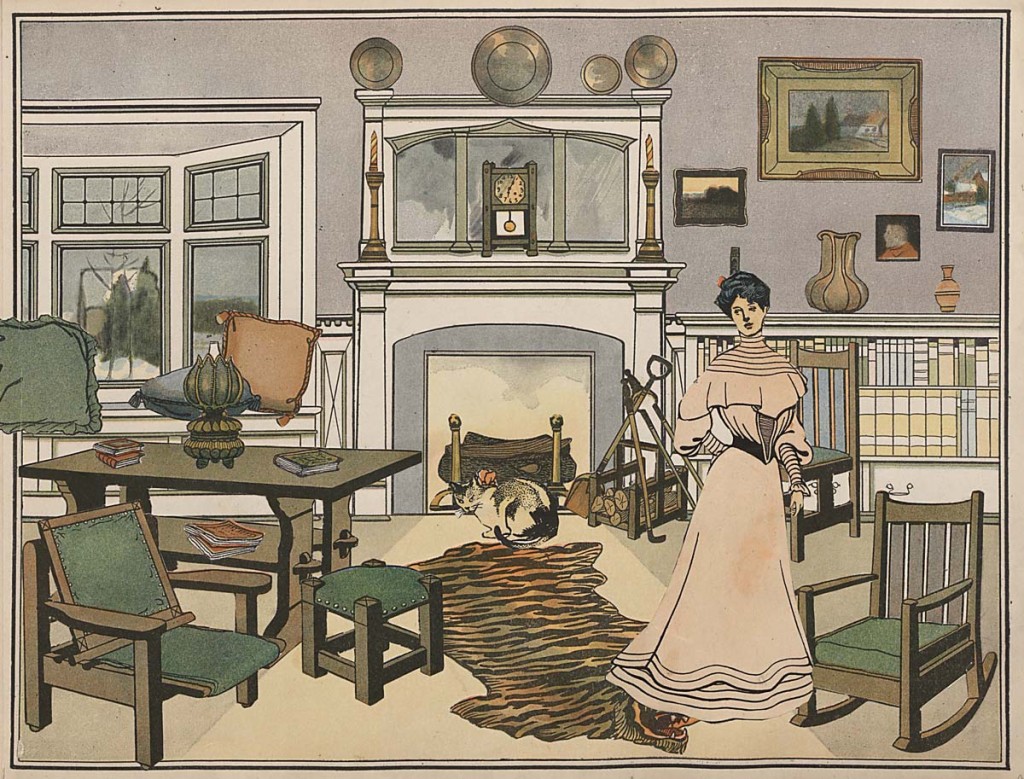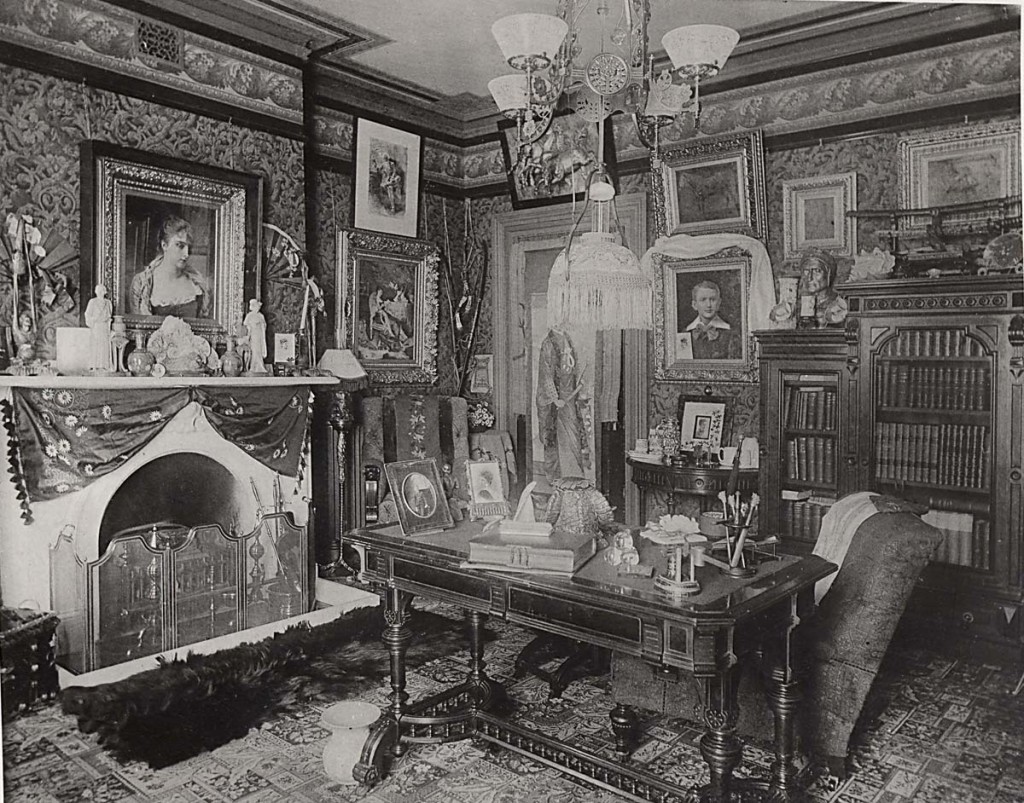The Real World
The question of how Americans furnished their homes in the past is not completely answered by looking at the items that were available. For an accurate picture of the past, it is necessary to use probate inventories, drawings, and photographs to reconstruct actual room interiors. Such records offer a clearer picture of everyday life.
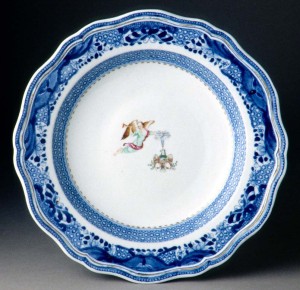 Record of purchases for the president’s residence in New York City
Record of purchases for the president’s residence in New York City
Compiled by George Washington
New York, New York; 1789–96
65×571 Downs Collection
Soup plate
Made in Jingdezhen, China; 1784–85
Porcelain
1996.0004.013 Campbell Collection of Soup Tureens at Winterthur
George Washington’s list of household furnishings acquired from local craftsmen and merchants, as well as the imported special-order soup plate from his Chinese porcelain dinner service, indicate that our first president used some of his personal belongings in the official residence. [See full household furnishings list.]
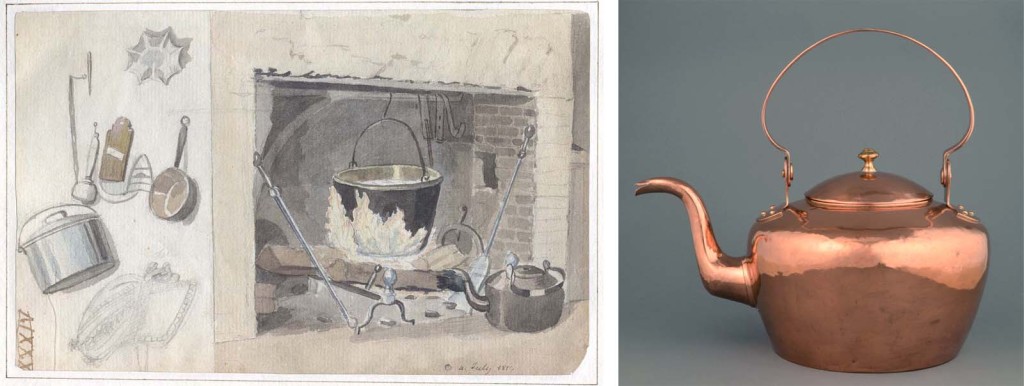
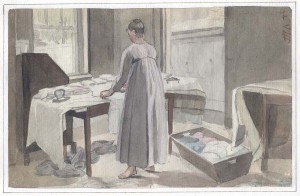 Sketches
Sketches
Made by John Lewis Krimmel
Philadelphia, Pennsylvania; 1819
Watercolors
59×5.5 Downs Collection, gift of the Friends of Winterthur
Kettle
Made by Oat & Cooke
Philadelphia, Pennsylvania; 1794–98
Copper, brass
1956.0064.002 Museum purchase
German immigrant John Lewis Krimmel is celebrated as one of America’s earliest genre painters. His sketches of room interiors and daily life show how simple objects, like this copper kettle, were used in the home.
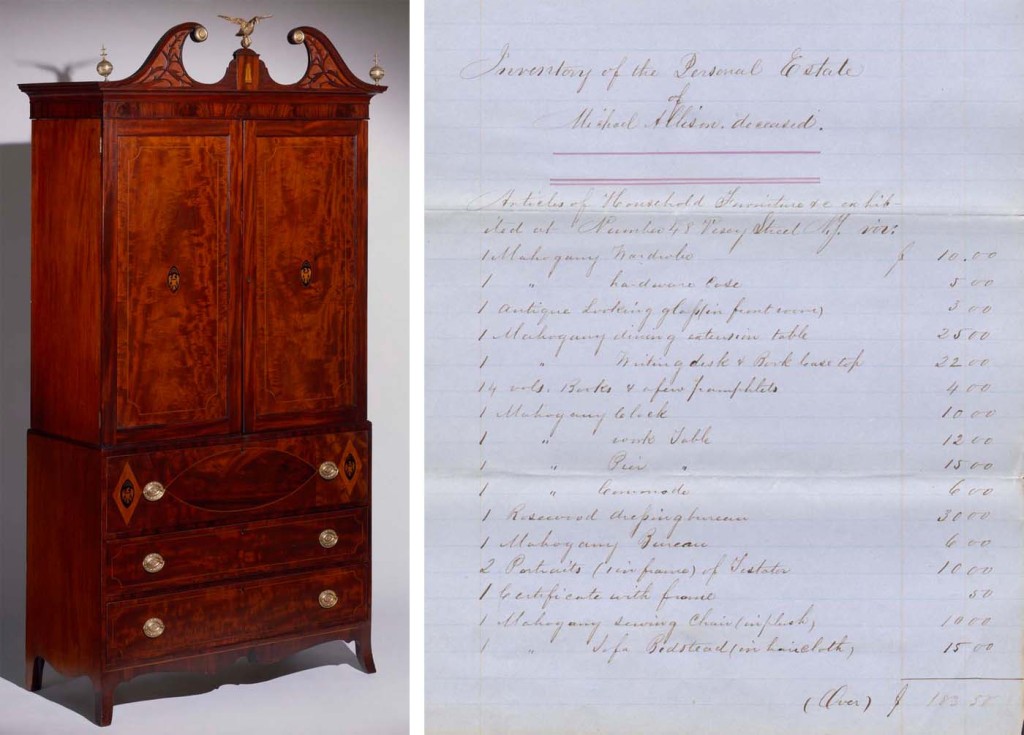 Wardrobe
Wardrobe
Made by Michael Allison
New York, New York; 1800–1815
Mahogany, satinwood, white pine, tulip
1957.0921 Bequest of Henry Francis du Pont
Inventory of the Personal Estate of Michael Allison, deceased
New York, New York; 1855
54x37x28 Downs Collection, gift of the Friends of Winterthur
Michael Allison Sr. was one of New York City’s most prominent cabinetmakers in the first half of the 1800s. The 1855 probate inventory [See full list.] made at the time of his death lists a mahogany wardrobe, probably similar to the one seen here, which was made by him decades earlier.
Drawing of room in the Rotch House
Made by Henry H. Crapo
New Bedford, Massachusetts; about 1880
Watercolor
69×220.5 Downs Collection, gift of Mrs. John M. Bullard
Alexander Jackson Davis, one of the most influential architects of the day, designed the Rotch House in 1845. These watercolors of rooms in the house were created several decades later by Henry Crapo. They show a charming mix of styles.
Collage of room interior
United States; 1870–90
Paper, wallpaper
85×41.2 Downs Collection
In the late 1800s, many girls made collages of room settings using wallpaper samples and scraps from newspapers and magazines. Publishers eventually seized on the idea and printed activity books with plates of rooms and cutout furnishings to teach children how to decorate them.
The House That Glue Built
By Clara Andrews Williams, published by Frederick A. Stokes
New York, New York; about 1905
Colored plate
Z1033 W72* Printed Book and Periodical Collection
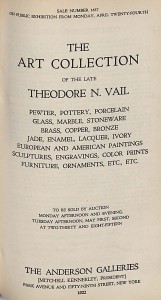 Mine Own House
Mine Own House
By Theodore Newton Vail, privately published
Roxbury, Massachusetts; 1887
F74 R88v F Printed Book and Periodical Collection
Estate Sale of Theodore N. Vail
Anderson Galleries
New York, New York; 1922
Printed Book and Periodical Collection, Auction Catalogue Collection
Theodore Vail, an entrepreneur of the robber baron era, photographed every detail of his house and grounds, from stable to attic. Many of the furnishings shown in the photographs were later part of his 1922 estate sale at Anderson Galleries.
Mrs. Chafee’s boudoir
Photographed by/for Mary Harrod Northend
United States; 19–
Silver gelatin print
99×71.6 Downs Collection, gift of the Friends of Winterthur
In the early 1900s, journalist Mary Northend photographed many interiors. The Victorian-style room seen here is full of art treasures bought by Mrs. Chafee’s husband during his military service in China.
Sitting room at White Pines
Photographed by Jessie Tarbox Beals
Woodstock, New York; 19–
Platinum print
92×39.1140.249 Downs Collection, gift of Mark and Jill F. Willcox
Photojournalist Jessie Tarbox Beals recorded the interiors of White Pines. This upstate New York home of Ralph and Jane Whitehead was the centerpiece of the arts and crafts colony they founded in 1901, called Byrdcliffe.
Related Themes:

